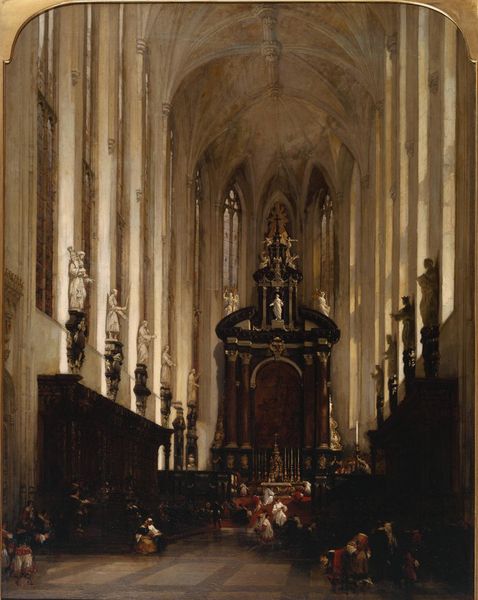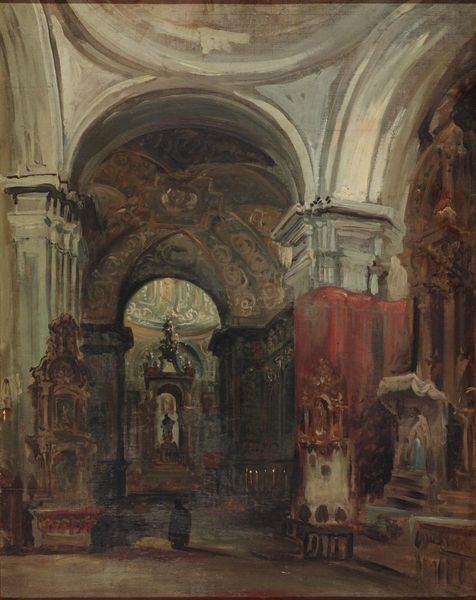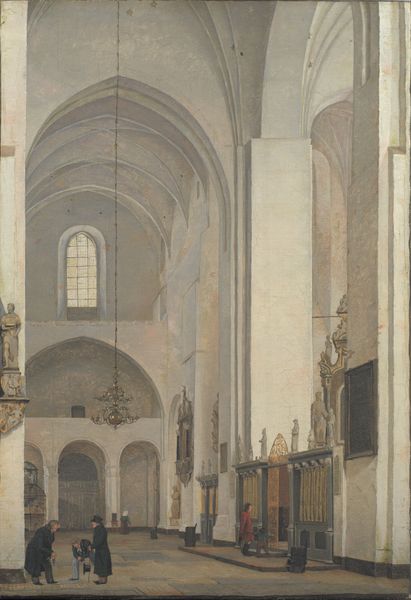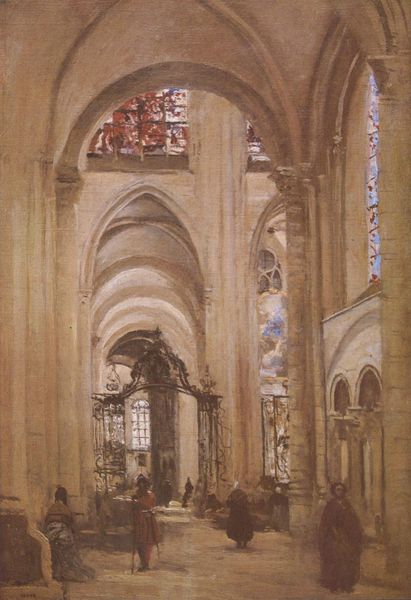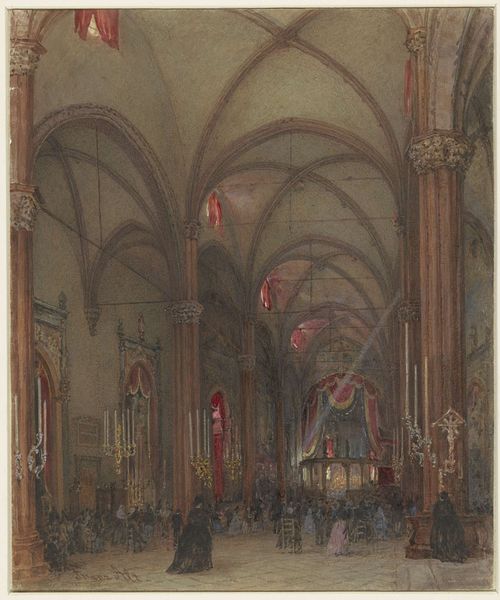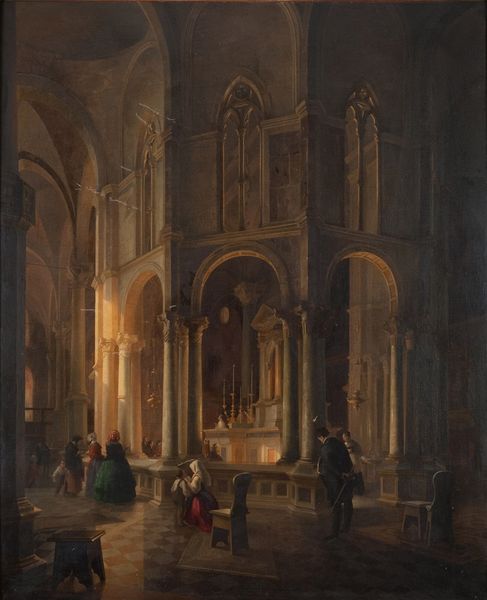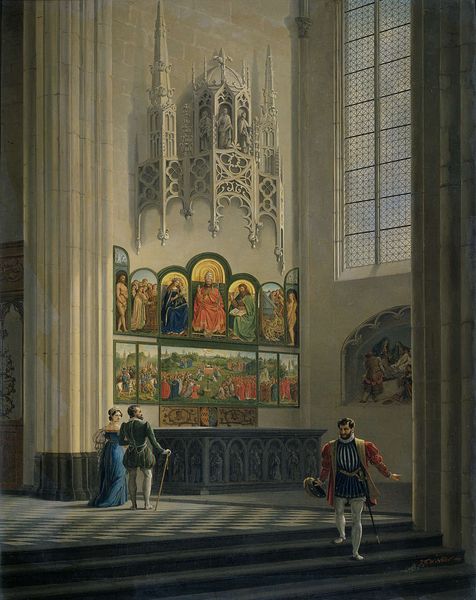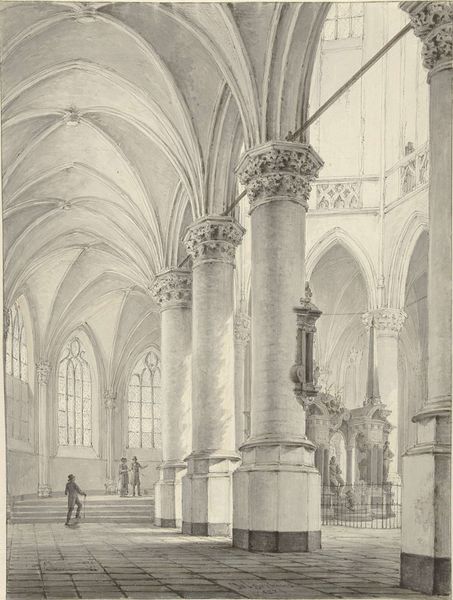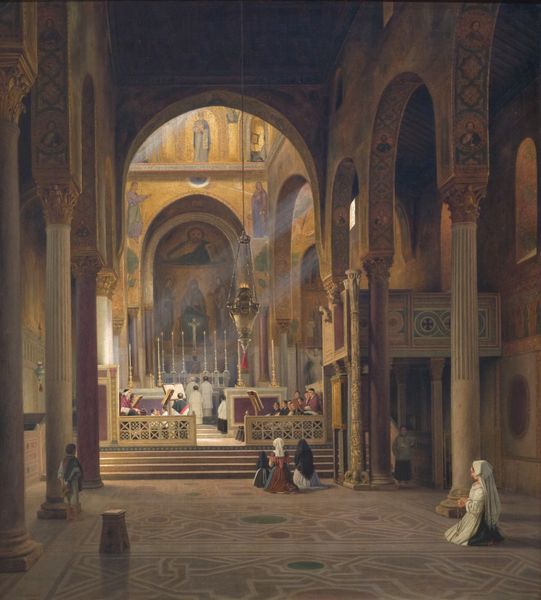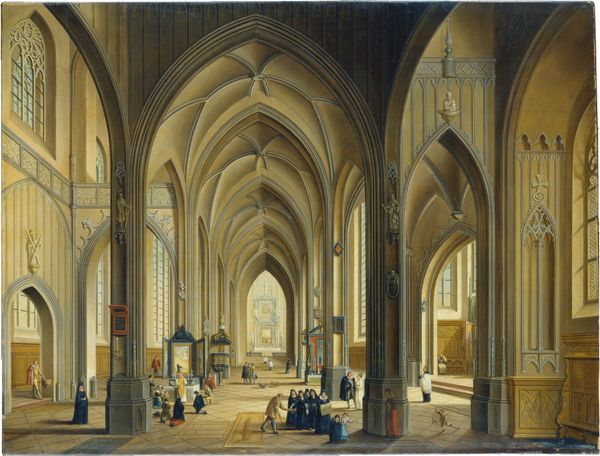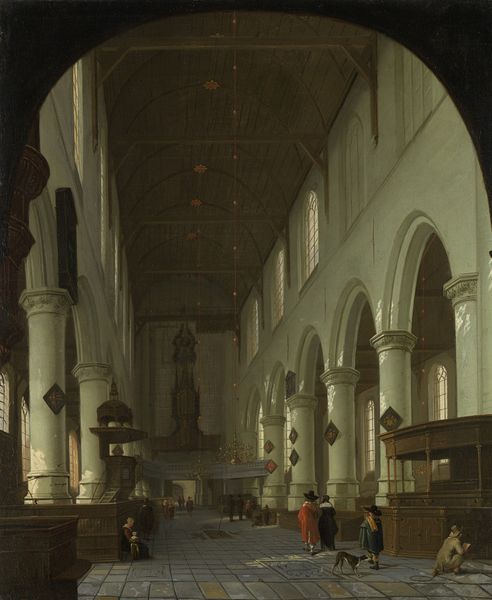
painting, oil-paint, architecture
#
painting
#
oil-paint
#
oil painting
#
romanticism
#
genre-painting
#
history-painting
#
architecture
#
realism
Dimensions: 73.5 cm (height) x 58.5 cm (width) (Netto)
Curator: This is C.O. Zeuthen's 1838 oil painting, "Det indre af Trinitatis Kirke," or "Interior of Trinitatis Church" in English. It's currently held at the SMK, the National Gallery of Denmark. Editor: The overwhelming feeling is of cold, muted light and grandeur. That vaulted ceiling seems impossibly high, almost oppressive. Curator: Let’s think about the construction of this space and the social implications of church architecture at that time. Trinitatis Church wasn't simply a place of worship; it also housed a library and an observatory, all intertwined within the same complex. How might that integrated functionality influence its reception? Editor: Immediately I think of light as revelation, the gilded decorations catching what light there is suggesting the heavens, promise, or perhaps reward. Note the way the cross at the altar anchors all the vertical lines. It suggests stability amidst aspiration. Do you see how those walking in the foreground appear almost inconsequential within such an immense space? Curator: Yes, those figures! They highlight the contrast between the man-made structure and those moving through it, emphasizing scale, and underscoring the act of labor it took to make it all happen. The materials, the techniques... how long to carve those columns, construct the pulpit! This wasn’t only a house of God, it was a physical manifestation of skill and power. Editor: But look closer. Even with this church symbolizing authority and permanence, the people here bring humanity and imperfection, reflecting everyday life, implying cycles of change and redemption within it. The cross becomes an immediate reminder. It ties faith and everyday life together visually and spiritually. Curator: True, yet consider how those pews and that exquisitely carved pulpit dictate movement, restrict access, organize the social hierarchy present in any place of worship. The craft involved is elevated but is there to instruct people, to impose ideas about social positions. It has a physical, palpable function within a system. Editor: All those layers create meaning beyond just simple faith, right? The artwork and physical space converge and invite continuous reflections, linking cultural memory, religious conviction, and human mortality. Curator: Agreed, seeing this painting allows us to appreciate that what is present is a nexus point between faith, production, the distribution of power and more besides. Editor: It's interesting how just observing the image then invites so much questioning and reflection regarding symbolism and process.
Comments
No comments
Be the first to comment and join the conversation on the ultimate creative platform.
